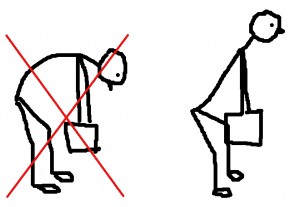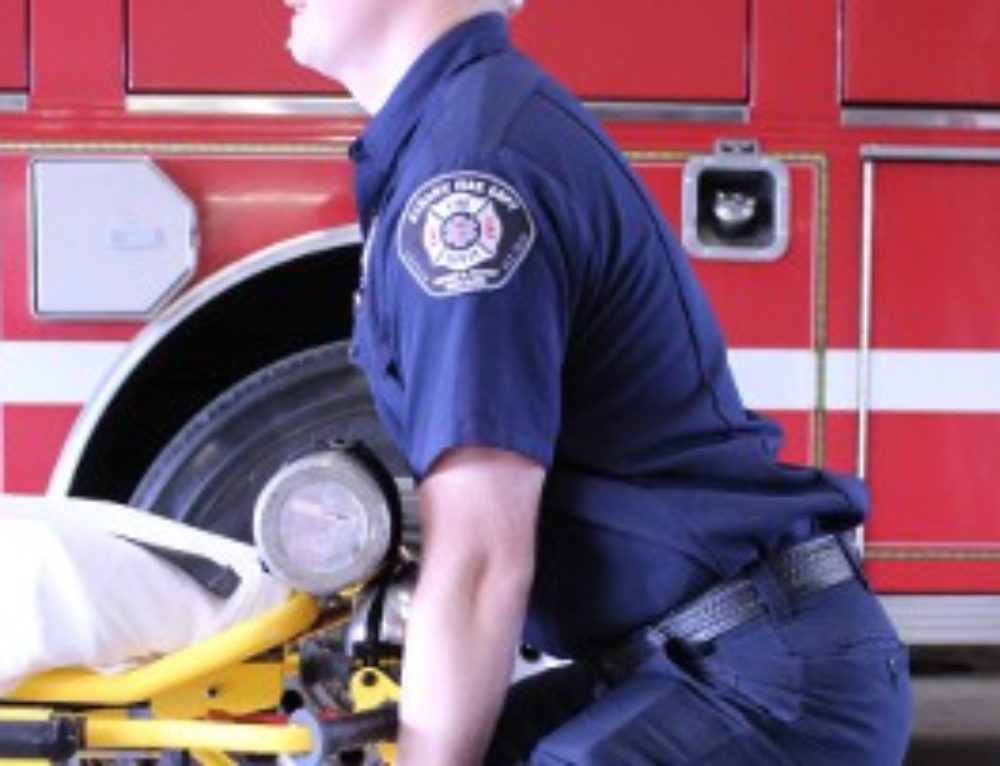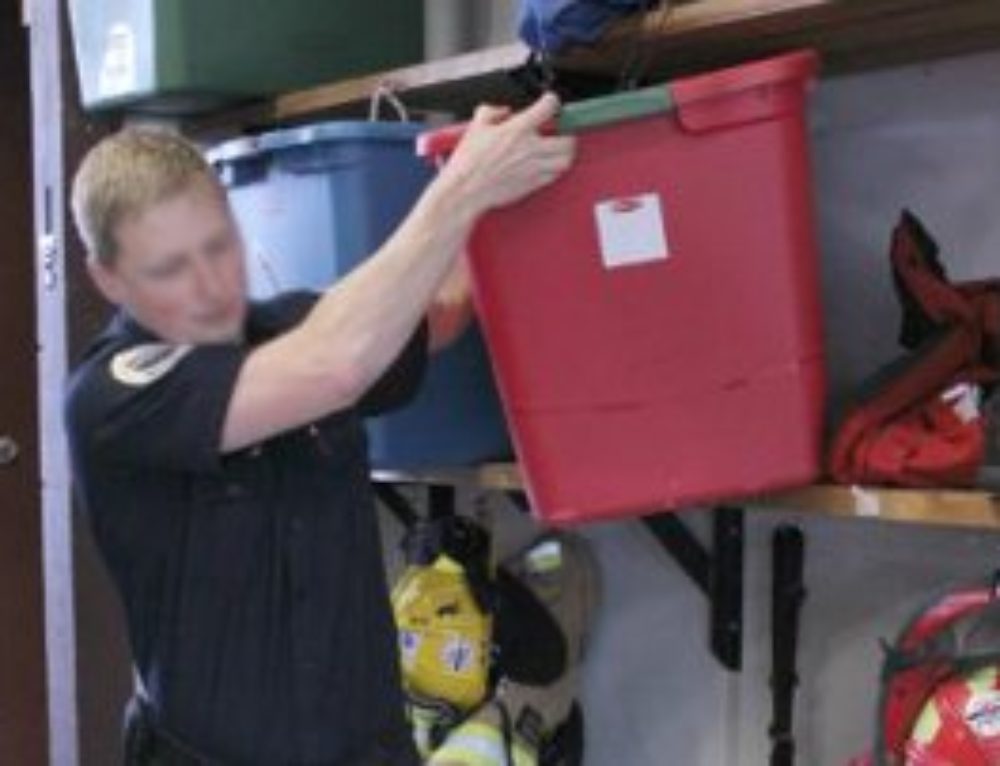A few weeks ago I began a series about a dire and complicated problem in the fire service: back injuries. If you haven’t seen it yet (it’s posted on every page of this series), the video below is a good primer about the misconceptions we have about treating and preventing back pain and injuries. Each week I’m going more in depth about the 6 myths discussed in this video. (see myth #1: back injuries are rare; myth 2: you need a flexible back to avoid back injury and myth #3: you need a strong back to avoid injury). I will discuss myth #4 below the video.
Myth #4: you should bend your knees when you lift
In myth #4, McGill explains that you should lift with the hips, not the knees. The old adage to bend deeply at the knees while lifting, to spare the back, has been replaced with better wisdom. Instead: a) the load should be kept as close as possible to your body, and b) your lumbar spine (low back) should always be kept in a neutral position, meaning it should have the same curve in it as it does when you are standing. You can accomplish this without a lot of bend in the knees (which as McGill mentions, puts a lot of strain on the knees and can cause arthritis). When you need to bring your torso forward to reach the object you are lifting, the key is to hinge over at the waist or hips rather than bending your lumbar spine.

This is why I recommend practicing deadlifts like those explained below. By focusing on driving the hips forward to reach a standing position, you can improve your lifting mechanics in addition to your hamstring strength; both of which will protect against back injury.
A few notes on deadlifts
Deadlifts are often done with too much weight. This is a problem if it prevents you from really being able to drive your hips forward and forces you to use your back to stand up. The weight lifted should actually feel fairly light.
Another mistake with deadlifts is to bend the knees a lot. This just makes it more of a squat exercise, which works the quadriceps, not the hamstrings. Often a person will naturally have a lot of bend in their knees because they lack hamstring flexibility (straightening the knees stretches the hamstrings so they bend their knees to slacken them). This all translates to lifting mechanics. If you have inflexible hamstrings, you have to bend your knees a lot while lifting, which is bad for the knees. Moreover, you may not be able to bend forward at your waist, because that also stretches the hamstrings, which as mentioned earlier may force you to bend your lumbar spine rather than keeping it neutral. So make sure you have flexible hamstrings! Do the exercise demonstrated here.
How to do deadlifts for injury prevention
Holding two hand weights, bend at your waist with only a slight bend in your knees. Keeping your back flat, bend at your waist and let your weight shift onto your toes as you lower the weights to knee level. Then drive your hips forward to stand up, squeezing your glutes and hamstrings. Do not bring the weights all the way down to the floor as that will cause your back to round out. (If you ever do need to lift something from the floor, you would do this same motion and then bend your knees to lower the rest of the way, as shown in the video at 1:14).

Image Credit: www.prevention.com/sites/default/files/imagecache/ssm_600w/static/01-deadlift.jpg
Over the next few weeks I’ll be discussing more myths about back injuries in firefighters, plus I’ll show you some exercises that you may unknowingly be doing that are BAD for your back!
Other myths in this series:
Myth #5: suck in your belly to work your core
Myth #6: sit-ups/crunches will give you a six-pack
If you’re not on my list to get more health tips like these, enter your name and email below.





That will take practice for many people. It’s not too dissimilar from doing front kick in the martial arts. A lot of folk lean way back, when there is far more power in leaning forward (straight back), and driving the hip forward with the foot leading the way. The image of the woman with 2 #ers was a good “start here” image. Get used to that feeling to moving the hips forward, then increase the weight.
Thanks for your input Leckey!